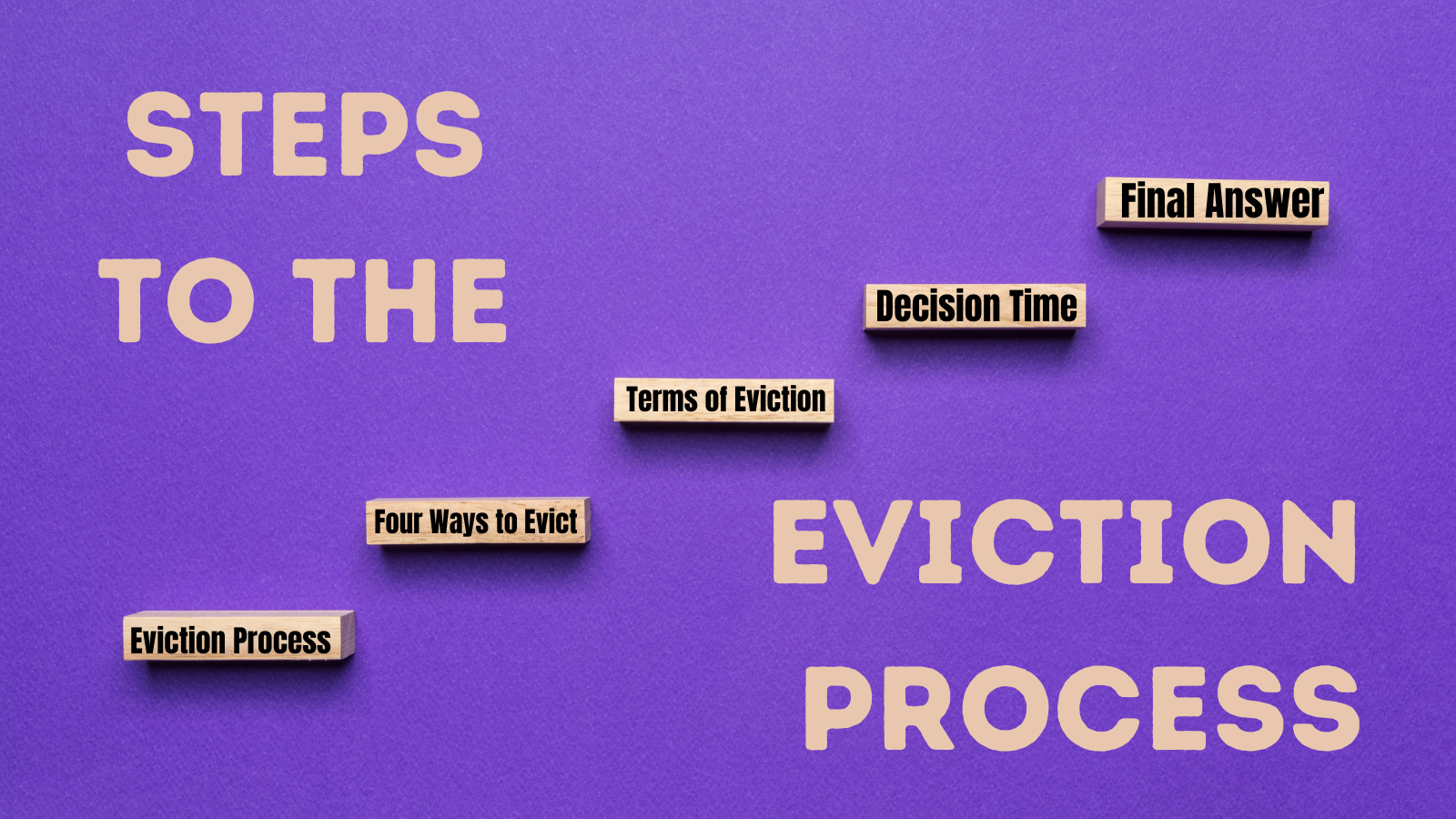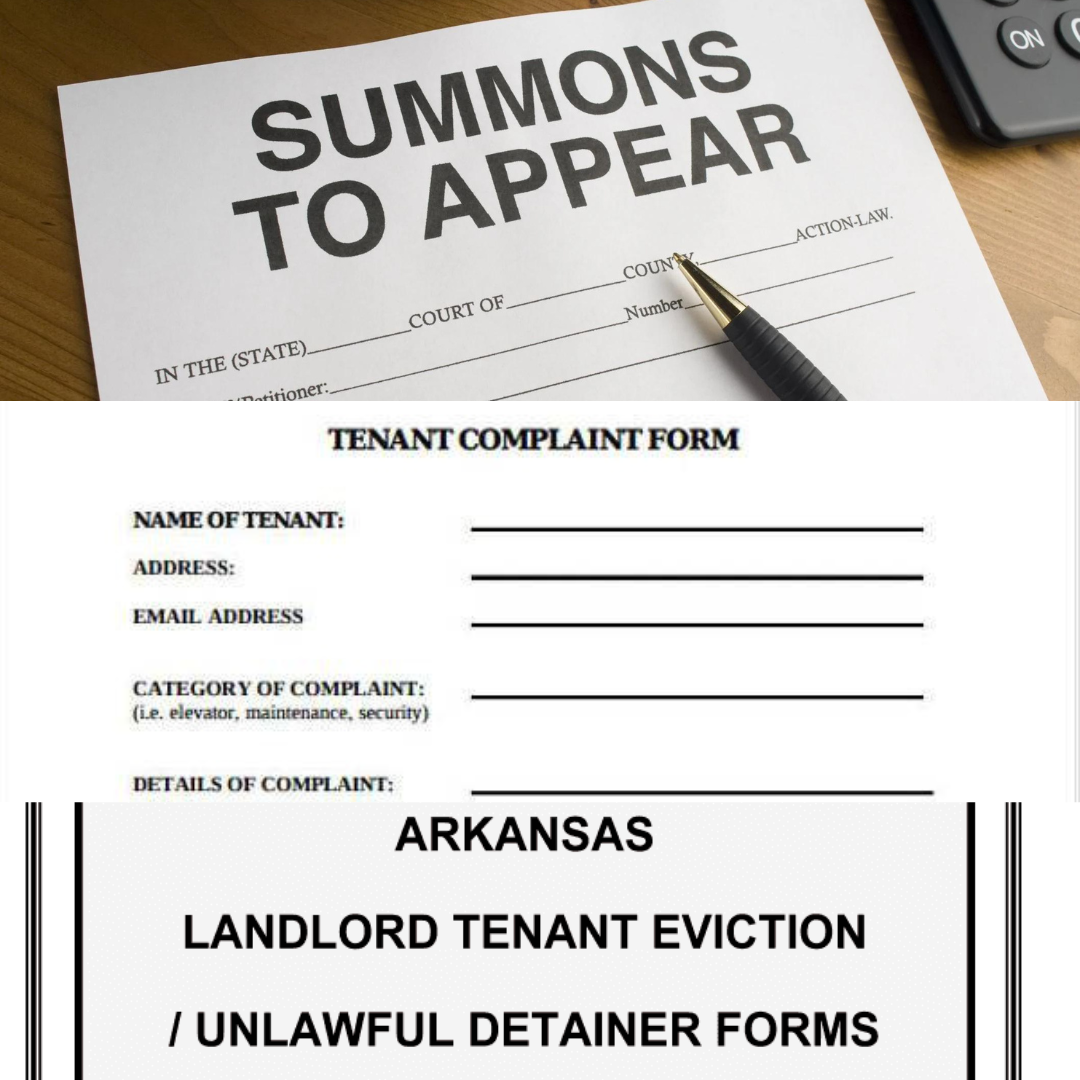Steps to the Eviction Process
Steps To the Eviction Process
Evictions can be a challenging and confusing process for both landlords and tenants in the state of Arkansas. Knowing the legal system and steps involved in the eviction process is important. You need to make sure and follow the law and protect the rights of both parties. The main thing is to provide a basic view of the eviction process in Arkansas and the key thoughts involved.
Eviction Process
The eviction process begins with the landlord serving the tenant with a written notice to vacate. The Notice to Vacate includes reasons the Landlord wants you to leave. For example, the landlord may want you to leave due to non-payment or a lease violation. Notice to Vacate requirements can vary depending on the lease agreement and /or the type of property involved. If a landlord receives federal funds, more protections are afforded to the tenant.
Four Ways to Evict
The next step is the filing of an Eviction lawsuit by the Landlord.
There are four ways a person can seek to evict someone in Arkansas:
Unlawful detainer
Failure to vacate (criminal eviction)
Arkansas Residential Landlord Tenant Act
Self-help or Forcible Entry (this type of eviction is illegal.)
Landlords file an unlawful detainer action the majority of times. Once the lawsuit is filed, the court will issue a Summons and Complaint, which will be served to the tenant. The tenant has only five days to file an objection. If a timely Objection is filed with the court the next phase is the hearing.
Definitions of Unlawful Detainer, Summons, and Complaint
An unlawful detainer is a lawsuit started by a landlord against a tenant who is illegally staying at the rental property. The lawsuit is filed by the landlord to get possession back of the property. The reasoning being the tenant's violation of the lease terms, non-payment of rent, or expiration of the lease agreement. This process allows the landlord to seek a court order for eviction and regain property control.
Summons is a legal document issued by the court that notifies the tenant about a lawsuit filed against them. In an eviction case, the summons informs the tenant about the landlord's complaint and the upcoming court hearing. It provides details such as the court's name, case number, the date and time of the hearing, and the tenant's to respond to the summons and duty to appear in court. The summons also outlines the effects of failing to respond or attend the hearing.
A Complaint is a written document filed by the landlord with the court to start legal action against the tenant. The Complaint here would be the unlawful detainer action. It outlines the landlord's worry and reason for asking for the tenant's eviction. The complaint includes needed information. The parties' names, the address, an outline of the lease violation or non-payment of rent, the eviction, and any claims of damages owed by the tenant. The complaint is the basis for the court's decisions during the hearing.
Decision Time
Both the landlord and the tenant will have the space to present their cases before a judge. If the tenant doesn't show up at the hearing, the court may favor the landlord. After looking at the evidence and arguments presented, the judge will make a decision. If the judgment is in favor of the landlord, a court order of execution may be issued. The order allows the sheriff to remove the tenant from the property. If the tenant wins, the tenant gets to remain on the property. It's wise for both landlords and tenants to get legal advice for of their case.
In conclusion, the eviction process is a legal procedure made to help issues between landlords and tenants due to the control of a rental property. Whether it is due to lease violations, non-payment, or expiration of lease agreements, evictions can be hard and need loyalty from both sides to follow the rules to be successful.
AUTHOR: CRYSTAL OKORO, STAFF ATTORNEY FOR CENTER FOR ARKANSAS LEGAL SERVICES







